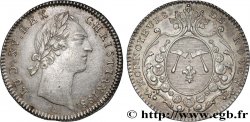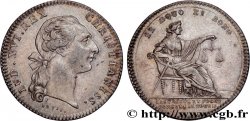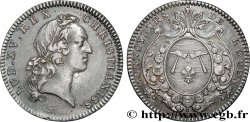fjt_072807 - MINT AND MONNAYEURS OF ROUEN Prieurs et juges-consuls de Rouen (Louis XIV), hybride 1711/1712
Not available.
Item sold on our e-shop
Price : 75.00 €
Item sold on our e-shop
Price : 75.00 €
Type : Prieurs et juges-consuls de Rouen (Louis XIV), hybride
Date: 1711/1712
Metal : silver
Diameter : 31 mm
Orientation dies : 6 h.
Weight : 11,12 g.
Edge : cannelée
Rarity : R2
Coments on the condition:
Usure régulière sur les reliefs avec de petites marques de manipulation dans les champs. Très bel exemplaire avec une belle patine grise
Catalogue references :
Obverse
Obverse legend : LUD MAG ÆQUUS - MONETÆ ARBITER.
Obverse description : Tête laurée à droite de Louis XIV [n° 250] ; sous le buste signature R et 1711.
Obverse translation : (Louis XIV, juste arbitre de la monnaie).
Reverse
Reverse legend : EX ÆQVO - ET BONO ; À L'EXERGUE EN TROIS LIGNES : LES PRIEUR ET IUGES/ CONSULS DE ROUEN/ 1712..
Reverse description : La Justice assise à gauche, une balance dans la main droite et un rameau dans la main gauche.
Reverse translation : (Par l'équité et par le bien).
Commentary
Coin de droit destiné aux jetons de la Monnaie (Feuardent 6278). Jérôme Roussel, qui a gravé ce jeton, est né en 1663 et décédé en 1713. Auteur de nombreuses médailles et jetons, il a commencé à travailler pour la Monnaie des Médailles en 1686. Il est aussi célèbre pour avoir réalisé en 1711 une série de soixante jetons inspirée des métamorphoses d’Ovide.








 Report a mistake
Report a mistake Print the page
Print the page Share my selection
Share my selection Ask a question
Ask a question Consign / sell
Consign / sell
 Full data
Full data









